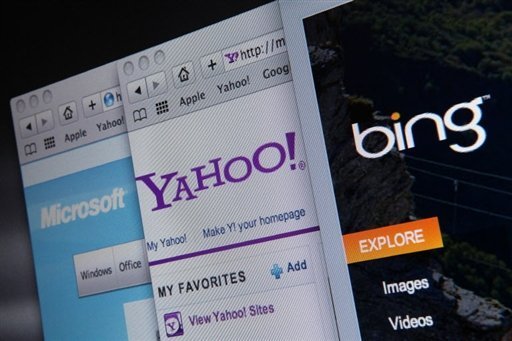A review and roundup of the best blog monetizing strategies of 2011
No doubt about it, 2011 was a good year for learning new ways to increase traffic, gain readership and monetize blog content. Although measuring success is subjective, numerous bloggers openly report blog earnings both to document results and to offer a training ground others can use for their own benefit.
Here’s a roundup of some of the best blog monetizing strategies, a peek into income reports, and marketing insights from bloggers in the know. A cross-segment of bloggers is represented here: small business bloggers, mommy-bloggers, college students who blog. The commonality is the desire and effort put forth to make it pay — also known as monetizing blog content.
Roundup #1: Cool Dozen of the Best Articles on Monetizing Blog Content
Ready. Set. Go!
Experiencing success with monetizing blog content has to do more with mindset than know-how. Setting goals, being flexible and adaptable, persevering, broadening horizons, and choosing one’s own path in the face of “crowd think” … ready, set, go!
Blogging Success – Reflecting on my Exciting Blogging Journey in 2011
Like most serious bloggers and marketers, I set myself some goals at the end of 2010. And, one of them was to take my blog to a whole new level of success… The outcome? … I stepped out of my comfort zone, pushed and challenged myself in order to get my blog to where it is today. Truth be told, if you want to grow as an entrepreneur and a person and build a profitable business, then you need to push yourself, challenge yourself. — Mavis Nong – Attraction Marketing Online
Paid Guest Posting Opportunities
Mark Thompson – Stay On Search
Many articles on how to crawl out of your shell — by way of guest posting, but not many on where opportunities exist to compensate you (monetarily) for the effort. Here’s a good one.
New York Times: About Monetizing Motherhood and Blogging
Dagmar Bleasdale – Dagmar*s Momsense
Although this post was written in 2010, the writer made a comment referencing it on a similar subject (What Do You Think About Sponsored Reviews – Yay or Nay, Jennifer James, Mom Blog Magazine) in 2011. I’ve included both here to point up both the lucrativeness of the strategy and the controversy that surrounds the topic of sponsored reviews and >paid content.
Dagmar says: “Mommy bloggers are still just beginning to figure out what they want and think is fair. I personally always knew that I wanted this blog to be something I’m making money with — and I boldly stated that in my first Dagmar’s momsense blog post. A lot of us who blog professionally have gotten over being shy to ask for payment because we realized how much clout our opinion has. If we are doing our job correctly, our readers look for us to inform them and they value and trust our opinion.”
Analyze. Tweak. Rinse. Repeat.
Replicating what works is easier to do when you have historical data to analyze. Conversely, you can also discard what bombs. Best practices, shared by others, are also a boon to your efforts to monetize blog content and build your business empire.
Understanding How to Monetize Website Traffic
Mitz – Website/Blog Name
From diversifying blog income streams to properly analyzing results, Mitz dives into a cross-section of activities involved with monetzing blog content. The many comments on this article provide context for how bloggers currently monetize traffic and raises lots of questions (with lots of answers).
7 AdSense Strategies You Should Adopt
Lisa Irby – 2CreateAWebsite
The title says it all . . . Location, channels, placement, video . . . Lisa Irby covers her own results with using these AdSense tips, places emphasis on testing and tweaking, and discusses one lesser-used technique for boosting revenues.
Systemizing Your Startup 101
Andrew Werner – Mixergy
Werner interviews successful entrepreneurs who analyze their success, share their closely-held business strategies, best practices, and things to watch out for. Here’s a takaway: a Guide with accompanying audio in mp3 format from The Lean Startup interview with Eric Ries)
Leave No Stone Unturned
Using every strategy available to increase your income earning options means you leave no stone unturned as you ferret out what works for your blog and your customers. From managing your own banner advertising to monetizing your video creations, these articles help you drill down.
Video Marketing Strategy To Brand Your Business
James Pruitt – IM Relations
More and more, having a video marketing strategy is becoming critical to the success of your website. You can also share the videos on your blog, and never forget, your email list will always like to hear some valuable news from you! These are great people who want to see what you have to share, and they can give you more views on your videos, increasing your rankings pretty fast on the video sites.
Passion to Profits Blueprint
Stella Anokam – Strategic Internet Marketing
Giving away free stuff is still a heavy contender as a passive blog monetization strategy. When done right, the receiver gets something truly valuable and the giver gets the long-term rewards. An unusual free digital book that’s off the beaten path is the original creative fantasy penned by blogger Mitchell Allen of Morpho Designs.
Powerhouse Blog Monetization Strategies
Product creation and monetizing your mailing list are at the top of the powerhouse strategies for generating steady income. The promotion starts with good content — on your blog — and spirals upward and onward. Two overlooked powerhouse strategies, perhaps because of additional time commitment or technical requirements, are managing a forum in conjunction with a thriving blog and running blogging contests.
How to Research and Publish an eBook Successfully
It is hard to argue that there can be another more passive way to generate income online other than publishing an eBook. Once you publish an eBook, you can sell it on unlimited platforms online for as long as those platforms and the Internet exist. And that can be done with little to no monetary investment. — Sunil – The Extra Money Blog
Which Forum Script Should You Use With Your WordPress Powered Website?
Robert Muldoon – WP Mods
According to Muldoon, linking your blog with a community forum substantially increases your money-making potential. Muldoon says, “Between 2001 and 2008, the majority of my income online came from discussion forums I owned or websites I owned that also had a discussion forum. I guess I was a little bit of a forum junkie. It was definitely a contributing factor in my decision to move into blogging more seriously in 2006. When you think about it, writing a long blog post isn’t really any different from writing a long forum post.” (see also Why I Don’t Use bbPress
Surviving the Blog Contest, Who Survived the Blog? – Final Results
Kiesha Easley – WeBlogBetter
Gamification in the form of blogging contests is a money-making blogging strategy that takes hard work, fair rules, and strenuous promotion. Easley’s Survior contest (patterned after the popular TV Show Survivor but no less adventurous) was a well-run team-based head-to-head competition with a serious cash prize. Other successful blog contests of 2011 included ones sponsored by FamousBloggers.net, Traffic Generation Cafe, and CommentLuv. A couple of contests happening at the time of this writing include Blogging Tips 101 and Blog Engage.
Roundup #2: Proof of Income
Bloggers Who Shared Income Reports
Laying aside shyness and embracing levels of transparency that are not necessarily steeped in bragging rights or one-up-manship, a cadre a bloggers are showing their rising revenue numbers to all who care to peek. Not entirely altruistic, believable numbers garner trust for the transparent, increasing opportunities to upsell training, gain consulting clients, or at the very least, pre-sell upcoming books (or ebooks). Throughout the year, these bloggers report blog earnings, shared best practices, caveats, and tons of useful information.
Hesham Zebida – Famous Bloggers Network
I made big earnings compared to the last months, and I spent almost all the money here and there, buying stuff and not thinking about tomorrow for the first time(!)
- Most profitable strategies: Thesis Awesome Theme Skins (own product), Optimize Press Theme, Genesis Theme customization
- Link to October 2011 Earnings Report
Justin Germino – DragonBlogger
[T]he interesting thing to point out is that this was my highest earning month yet not my highest traffic month which shows that earnings can increase without traffic increasing.
Ana Hoffman – Traffic Generation Cafe
I made it my priority to work on improving rankings for my product reviews specifically, but also other posts that have great potential to capture a high number of Google users. … This [2012] will be the year for me to turn Traffic Generation Cafe from a hobby into a business.
TriNi – Make Money Online Free
I recently started back college, trying to finish my Bachelor’s Degree in Business Administration (Accounting) . . . and also still working full time and taking care of a household, life has kept me pretty busy! However, I have still been making money online from this blog …
Pat Flynn – Smart Passive Income
November was a good reminder, once again, that diversity is extremely important. … November and December are historically the slowest month’s for sales on the website – professionals aren’t studying during the Holidays . . . the environment you work in has a major impact on your work flow and productivity.
Laura – Passive Income from Your Dorm
There are many ways that you can earn money from your dorm room. I’ve decided to write this blog for those of us in a position of trying to earn money while in school. Ultimately, I hope to be able to look back . . . and state that I am earning my entire income online.
Eric – My 4-Hour Workweek
If I had to pick a word that sums up my past couple months of online work, it would be this: irony. Both December and November were highly productive months, yet somehow, they have led to two of my lowest consecutive earning months. [*]
The quote is from Eric’s end of year report, however, the earnings report linked to here is one in which he discusses how his earnings were affected by the Google Panda update.
That wraps up the roundups
Writing, managing, and monetizing blog content is not easy. But the income earned as a result of perseverence, testing, tweaking, and following best practices can be very, very rewarding. (And when the going seems a bit rough, no need to call the doctor, a little laughter goes a long way!) Here’s to hoping 2012 will find you using the most profitable blog monetizing strategies and we’ll get to see some of your blog earning reports.
Your turn …
How did you monetize your blog content in 2011? What were your favorite strategies? What’s your take on sharing blog earning reports? Planning to do anything different in 2012?


























